Context and Summary
In January I began a Master of Arts in Learning, Design, and Technology last month with Central Michigan University (you can follow my MALDT Progress here). The program is the first to include ISTE Certification (setting us up to be ready to apply at the end of our degree). In one of my classes I am taking 16 weeks to design (and redesign, and change, and tweak) one lesson really well. We are working through a design cycle as we create this lesson. This is a reflection of my first step - Empathy.
"Empathy is the foundation for a strong, human centered point of view, and a great design project demands a rich empathy experience."
I was noticing that my students were not always editing their work as well as I wanted them to be, if at all. I wanted to make this process more exciting for my grade 4 students. I wanted it to also be an authentic task that could happen from school or home, just like in the adult world of editing. I use the suggesting tool on Google Docs all of the time in the "real world." I also use it with my students, but have never asked them to try using it with each other. I like that the feature allows for suggestions, so the author can make decisions for themselves about whether or not to accept the change. The more I thought about the opportunities I have that are like this, the more I thought about the lack of opportunities they have for it.
I decided to create a place for students to submit a Docs version of their writing and ask for peer feedback/suggestions on editing using the 6+1 Traits of Writing by Ruth Culham. Students would use this database in two ways.
Process so far...
My Process for designing the Empathize portion of my lesson
First I created a “quick and dirty” design of the lesson. This included the creation of this Google Sheet for students to add a link to their writing to. I added columns for students to identify specifically what they would like feedback on, and when they would like the feedback by. Then I emailed teachers in grade 3 and 5 to see if anyone was using the same writing program as we are in Studio 4. None were really using it in the same way, but a few teachers did reach out as willing to have their students trial some editing with my and my students.
What I have learned so far...
As someone who likes to dive into things, I am learning that taking the design cycle slowly is beneficial for the end user. Of course it is not always possible to go this slow, but I am glad I chose a lesson that is something we come back to all year long. I am used to adapting and changing things based on user (student) feedback and needs, but have not really taken this amount of time before even talking to the kids about it. I am excited to get the Google Form out to at least my class and see what comes back from them.
I am thinking that consolidating their knowledge of the 6+1 Traits of Writing will be a good next step for my class. Seven traits is not always easy for a grade four student to remember off the top of their head. We have been working on the principles of design and visual literacy, so creating posters or videos about the traits could be a great way to tie these things in. I am looking forward to the next step of the design process: Define. This will help me create some goals and consider the gaps my students need support with.
3 Comments
As I have mentioned many times in this course, the Studio 4 teaching team is extremely collaborative. Because of this, I was having some delays in brainstorming options for my course 5 project. I have chosen two and outlined them below. Hopefully some readers can provide me with some feedback and suggestions. I also begin my Masters in January, a Master of Arts in Learning, Design, and Technology with Central Michigan University. So it will definitely be a busy time, but full of learning.
Overview - explicitly a 3 week unit about visual media and media representation with a focus on the concepts of purpose and audience. The purpose of this is to prepare students with skills for the later units, Sharing the Planet (STP) and possibly How We Organise Ourselves (HWOO). Knowing how to create infographics and use CARP in different apps and websites will be useful for them in these units.
What will your students be able to do? Create visually appealing media in multiple digital forms - infographics, presentations, etc. using different tools - Keynote, Canva, Sketches School, etc. for different audiences and different purposes What will they understand? Media has a purpose and an audience. Creating for an audience has some consistent rules, no matter what tool you are using. Personal styles still apply. What skills will they build? Creating, perspective, communication What ISTE Standards for Students will you prioritize? Creative Communicator - 6a, 6b, 6c, 6d, and some of Innovative Designer when we get to the STP part of the unit
Overview - all 5 atl skill areas - students reflect on strengths, weaknesses, create goals, lead workshops, etc - CAR Times
What will your students be able to do? Reflect on and lead workshops on IBPYP ATL skills, set goals for themselves and work towards these goals themselves and help others reach their goals What will they understand? How ATL skills help us with life What skills will they build? Thinking skills, research skills, communication skills, social skills, self-management skills What ISTE Standards for Students will you prioritize? 1C, 3D?, 6A, 6D,
Which would you like to see developed? If you have done COETAIL before, what would you suggest?
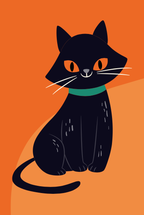 CREDITS: Slidesgo, Flaticon, Freepik. CREDITS: Slidesgo, Flaticon, Freepik.
Okay. I'll admit it. These collaborative projects in course 2 and 3 have been hard for me. Along with everything else Covid related, collaborating with educators in different time zones is hard. Collaborating with educators in different subject areas, curriculums, and grade levels is hard. Creating one unit together that feels authentic to everyone on the team is... more than hard.
BUT... something clicked for me part way through this unit (I think being on vacation may have helped with that!!!)... what if, within this unit... our students were actually global collaborators? What if, to make it authentic for all three of us creating this unit, all of our classes were actually involved? That was the moment things started to flow... I worked with Simona and Melanie on a unit about Halloween. I used my new favourite, Slidesgo to create the slide deck and things just started flowing! Basically, Simona and Melanie's classes were to create the content about Halloween, and then at the end of the unit (next week) my grade 4 class will be the audience and give them feedback. My class are already talking about audience, purpose, and effectiveness, so it will be a great (and fun!) task for them next week. Here is a link to the slides which show our lesson progression. Each lesson is clearly outlined with steps, learning outcomes, ISTE standards, and content standards.
Why did you choose the option you chose?
For the three of us, choosing this option seemed like the best one at this time. My course 2 project was very time consuming with all of the videos as well as the booklet, and the three of us wanted something a little more "sit down and complete," if you will. It is a busy time of year and we all needed this space. Why did you choose this topic? These standards? I actually missed one of the collaboration meetings that ended up in this Halloween decision, but as soon as I saw it I loved it and was completely on board. The standards used fit the classes that will use each lesson. So some are Common Core, and then for my grade 4 lesson I just added in our central idea and lines of inquiry which fit nicely. How did you grow as a collaborator and facilitator during Course 3? As I mentioned above, I think it all clicked when I realized we could/should actually follow through and get our classes to globally collaborate. This is something I do not do a lot of in my class, so I am excited to get it started. How was this final project different from or similar to other learning experiences you have designed/facilitated? I was mainly feeding off of other people's needs and ideas. I took the lead on creating the slides because I felt like that was something I could do well, without interfering with the process my group members needed to go through for their own learners. I of course created the grade 4 lesson because it is for my class. How does this final project relate to what you learned in Course 3? Our final project includes the enduring understandings from course 3. The students create posters which focus on hierarchical design and CARP, they create infographics, and a presentation in the end. It is a lot of designing and creating on their end, and then they share it with the grade 4 audience. What has influenced you the most in Course 3 and how is that reflected in your final project? Slidesgo! It is no secret that I love it now! That might sound weird that it has influenced me the most, but it truly has changed how my slides are presented. What outcomes do you hope to see when students (or educators) complete this unit? How will you know that students (or educators) have learned the concepts? I hope they become better designers. I feel like this unit can be adapted to many ages, and I love sharing this passion for design with my classes. I hope that students will also understand the value in creating for an intended audience which is global and for a purpose. If you facilitated this experience, how did the learners respond to it? What feedback did you collect to inform future experiences? I have not facilitated my end of the experience yet, but have received some creations that I will be putting together for my students to view and give quick feedback on. |
Cindy KaardalThis blog page is specifically for my COETAIL blog posts. Archives
April 2021
Categories
All
|
Proudly powered by Weebly
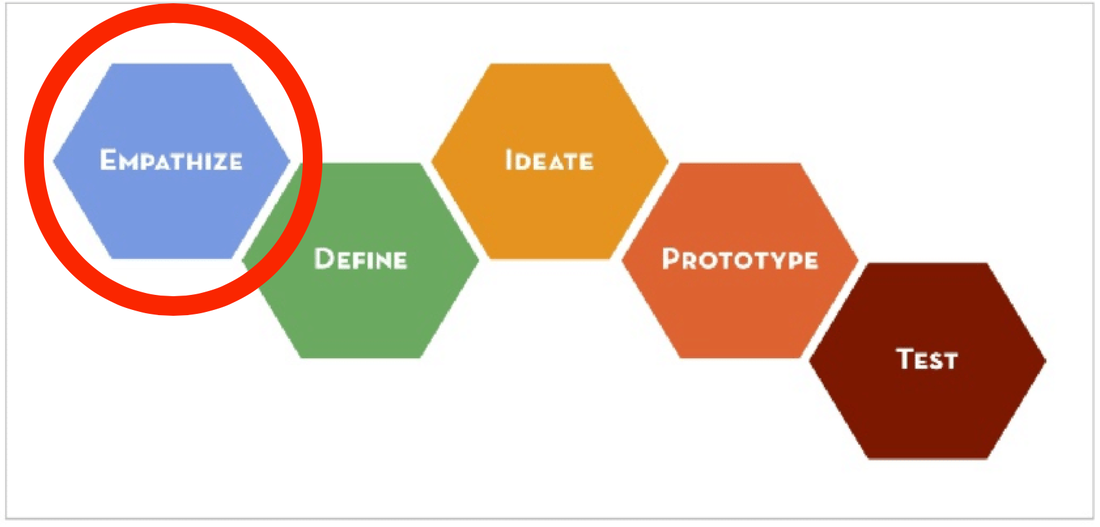
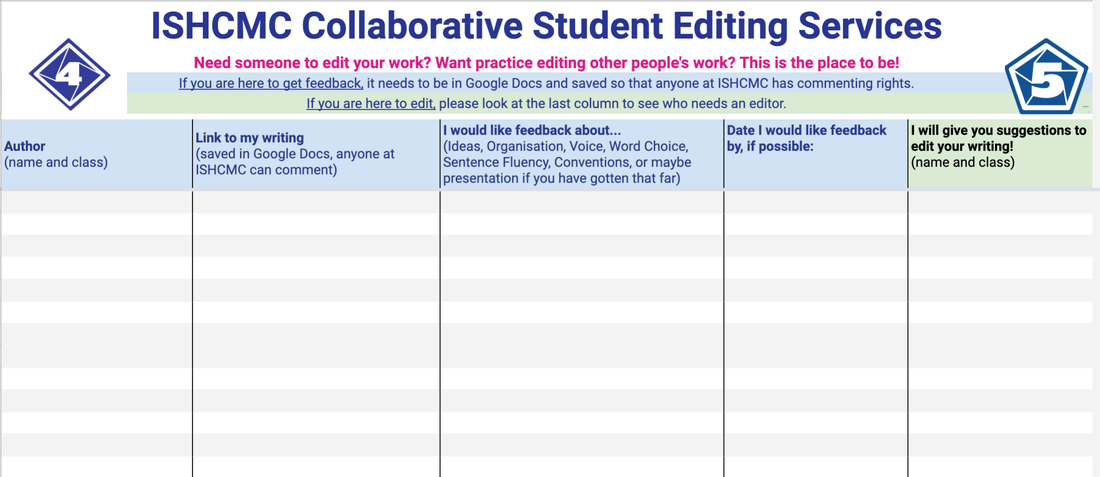
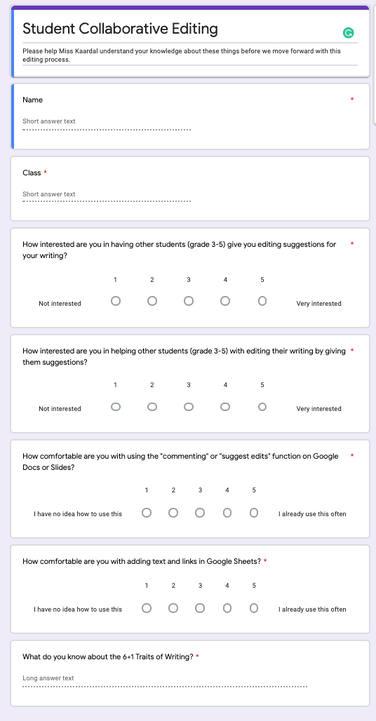
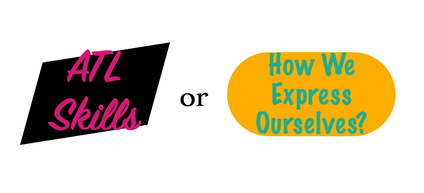

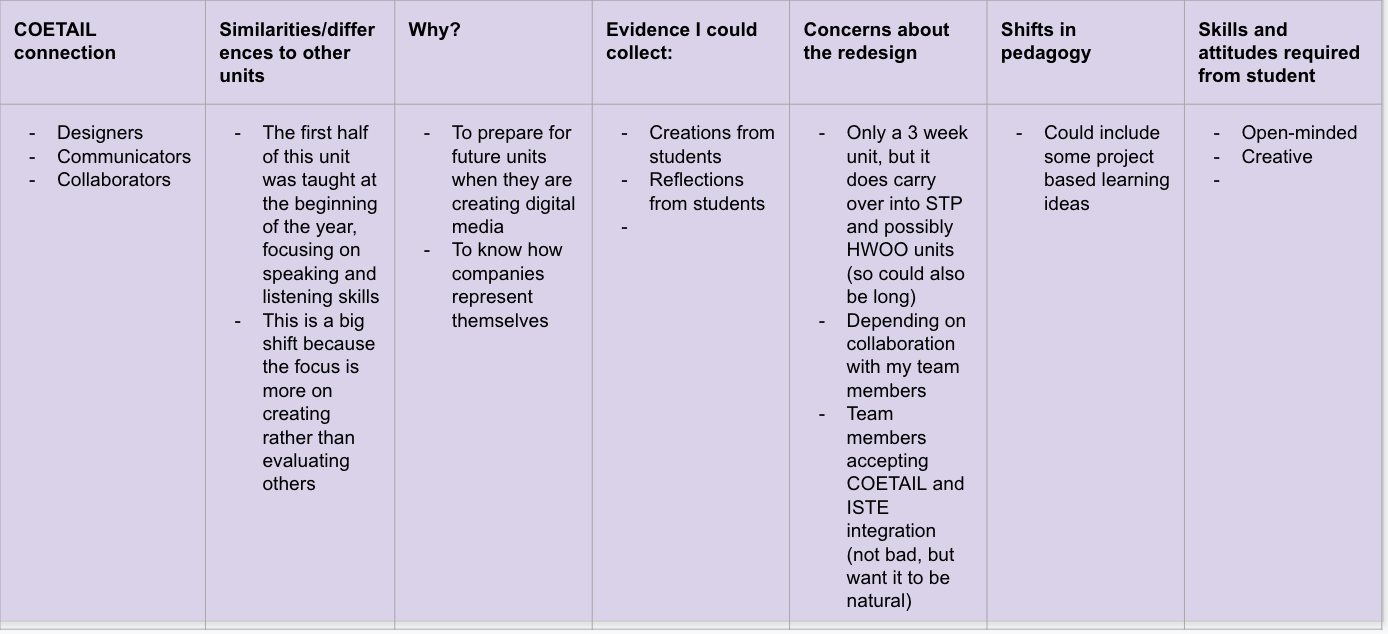

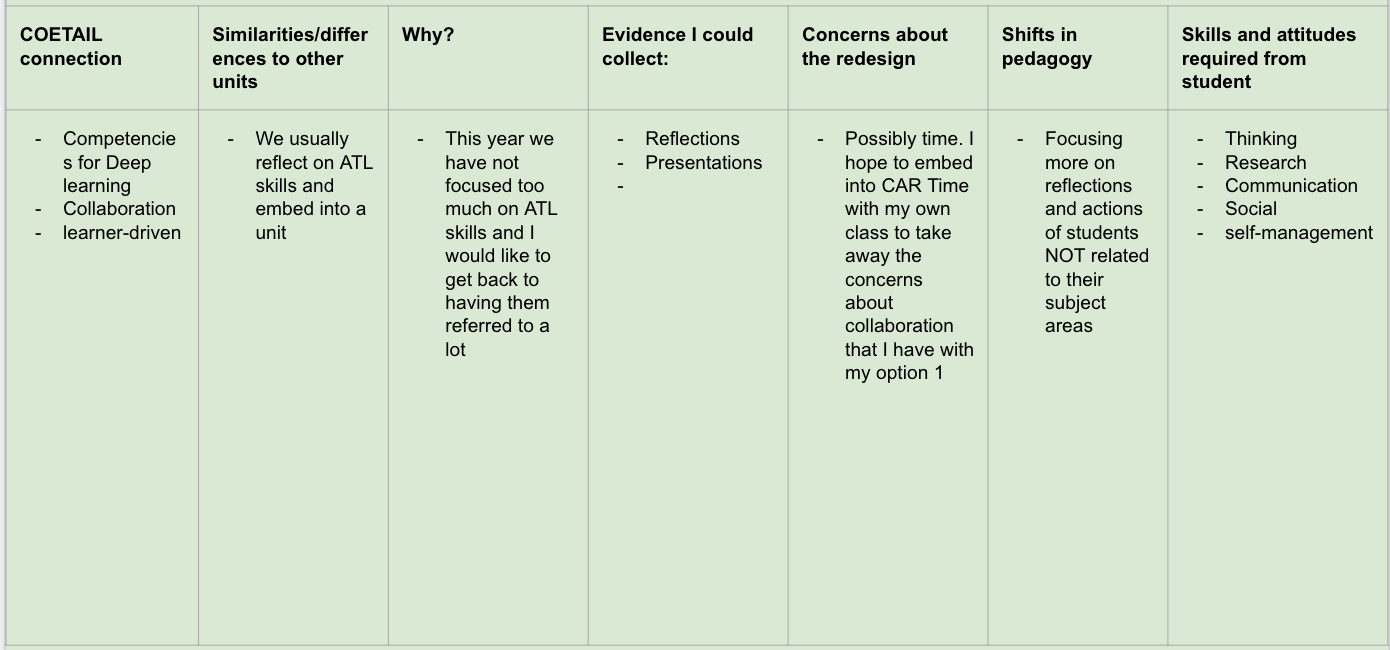
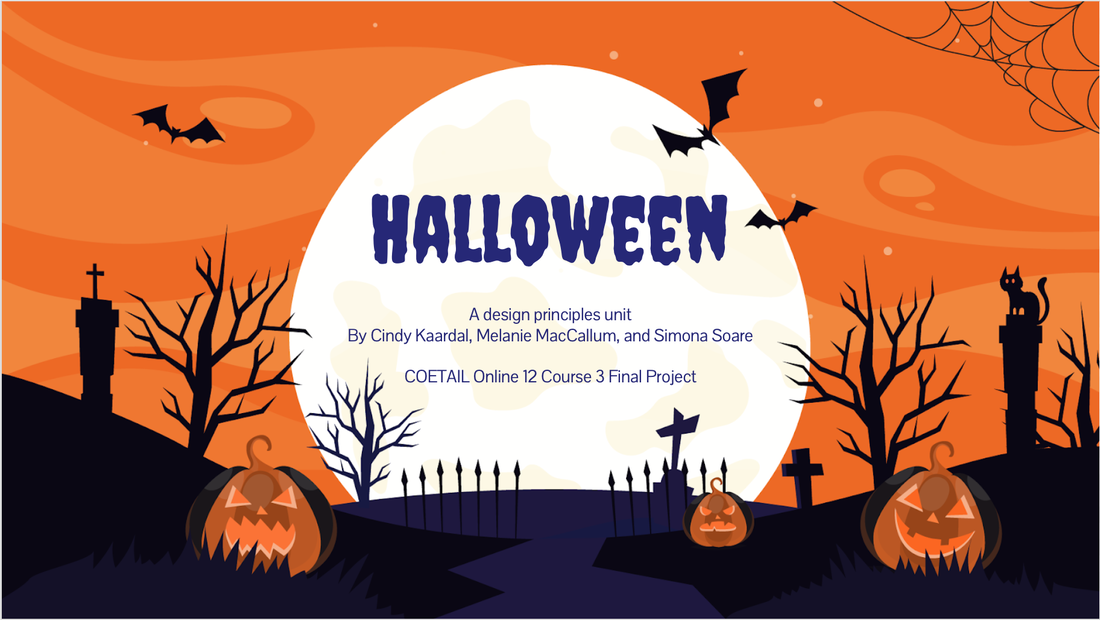
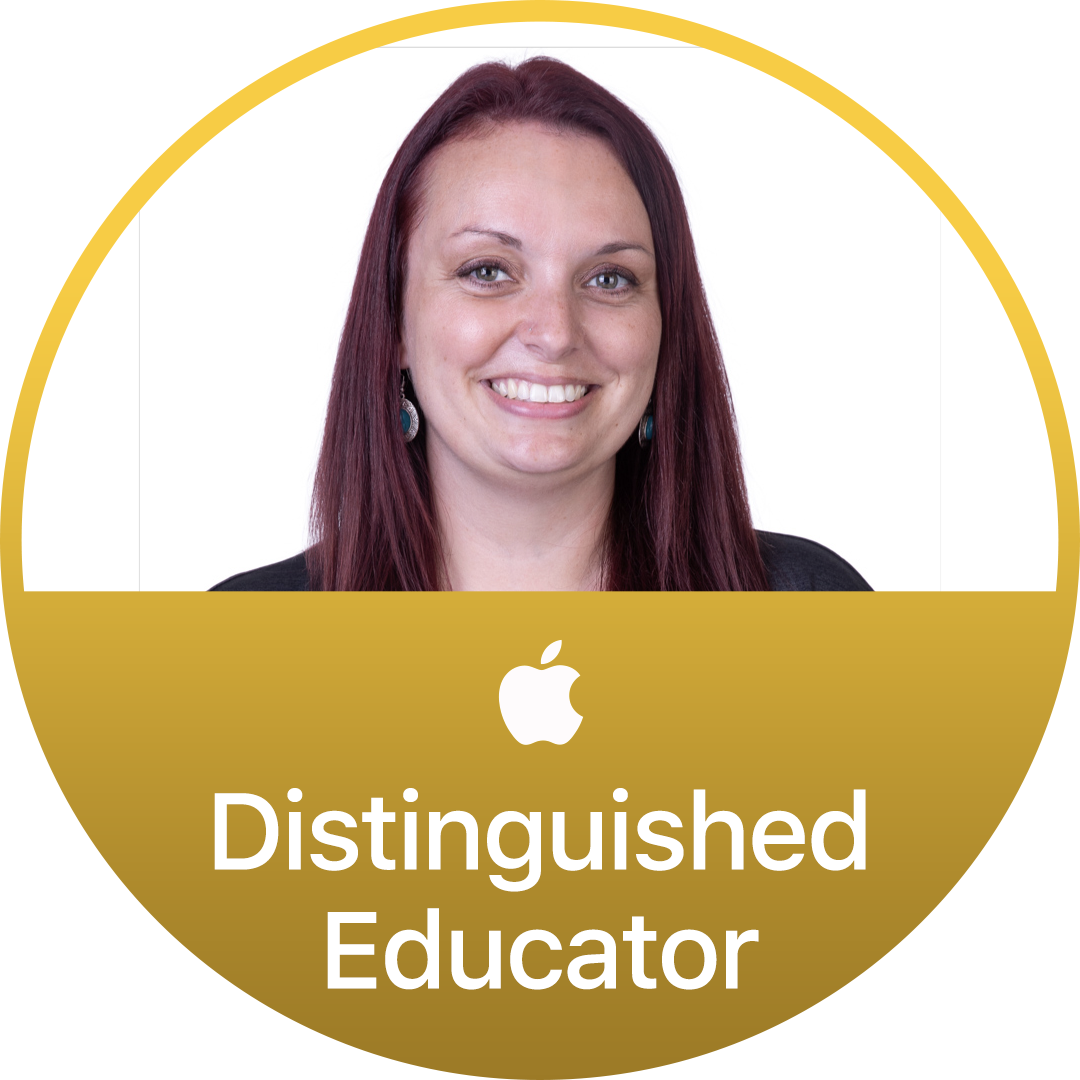
 RSS Feed
RSS Feed